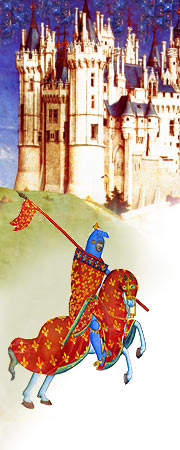|
Eastern European Castles
Medieval history in Eastern Europe is replete
with battles amongst members of varying ethnic backgrounds.
Geographically, politically, and culturally there was, and
remains, a great diversity between various regions. This translates
into a variety of medieval castle architecture found throughout
Eastern Europe.
After the Roman Empire fell, led to a deterioration
of cities, stadiums, temples, towns and other military and
civil structure. Germanic tribes moving from one are to another
began constructing stone fortifications. Much of Eastern European
castle design is a mix of western and Mediterranean styles.
The Balkans were dominated by Ottoman sultans
for centuries, and many towns became known as warrior villages.
Castle formerly belonging to Christian nobility fell into
ruins after the owners fled, and the invading Turks rarely
built castles.
Fortified monasteries can be found in the
Bulgarian mountains, the most famous being the Rila Monestery.
Many places of worship were heavily fortified to protect villagers
from invading armies. Country people would seek refuge during
raids in churches.
The Slavic peoples also build stone fortifications
during the Middle Ages. Castle architecture in these regions
usually adopted a more western style. The best examples of
medieval castles can be seen in Karlstejn and the Gothic mountain
fortress of Pernstejn.
|






